Email Templates
Email templates allow you to create bespoke messaging for triggers associated with a customer's account.
For example; you can create an email template for when a customer has purchased a product. This template can include specific information which relates to the purchase (Package, date, costs etc). This would then be automatically generated and sent to the customer's registered email address.
The template can be branded with custom layouts applied so that it is aligned to your own branding.
You can also set email sender friendly names to personalise the email engagement to your customer.
Note: Current functionality only allows templates for Product Purchase and Crossgrades.
Version: 2020.09.01
Applies to roles:
System Administrator System Administrator (NO CRM)How to view Email Templates
Follow these simple steps to view existing Email Templates:
- Select Configuration
- Select Email Templates
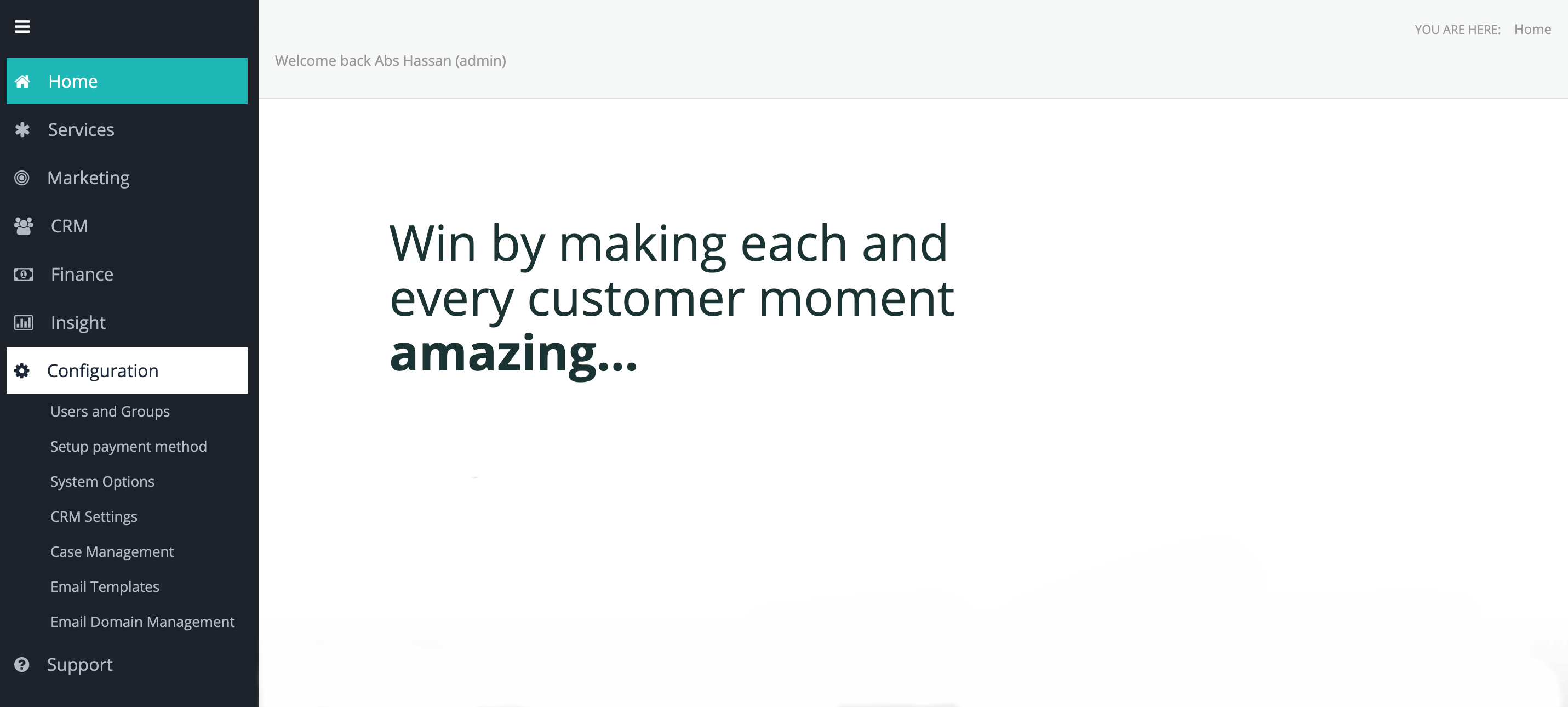
This will launch the Email Templates section:
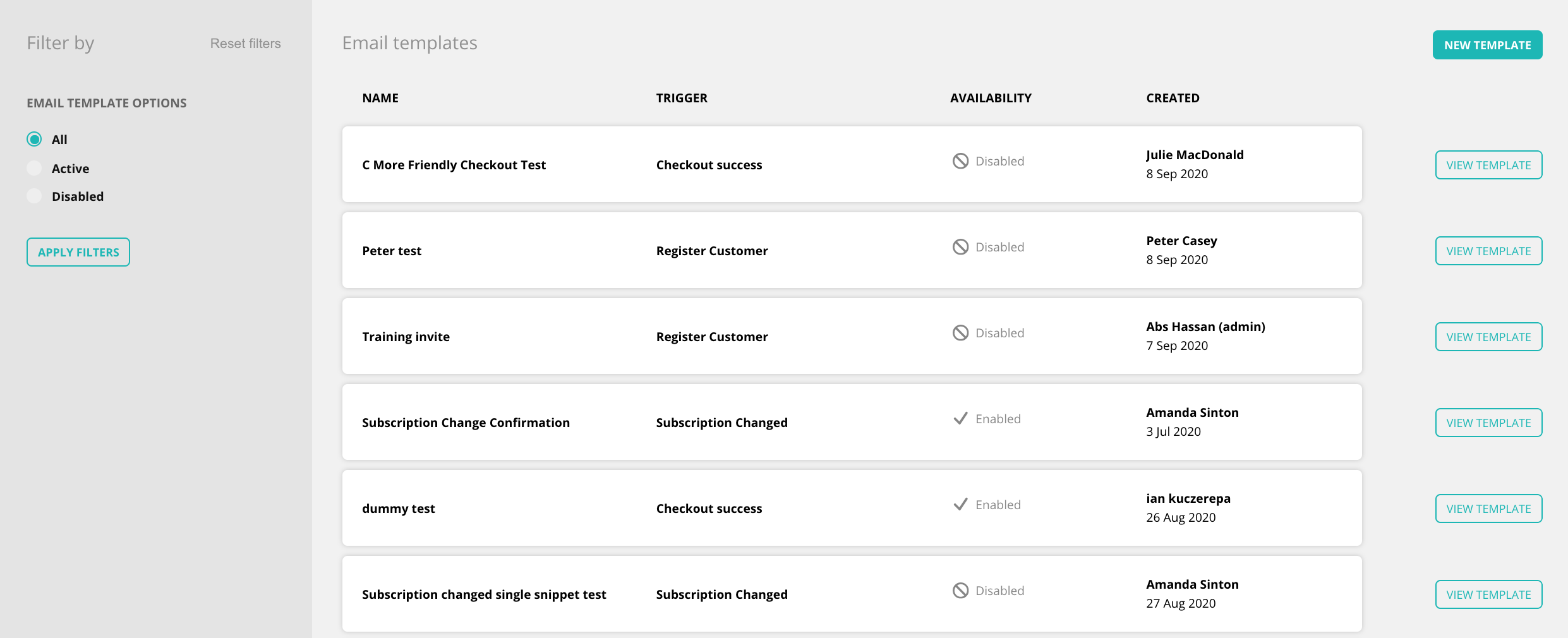
...
Here you'll see all the templates created.
All templates will be displayed along with the option to filter to only view the Active or Disabled ones.
- You can filter the templates using the left hand menu:
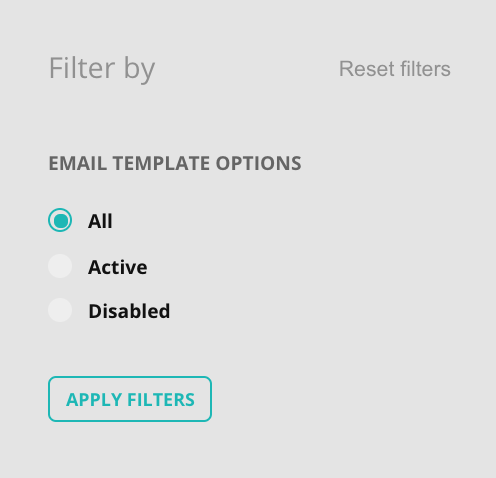
...
You can create and view templates from this screen.
- Email Templates will be listed in order of most recent created first. The list will show the template's Name, Trigger, Availability and who created it and when:

...
Selecting 'View Template' will launch the manage template screen, where you can edit the template along with enabling or disabling it:
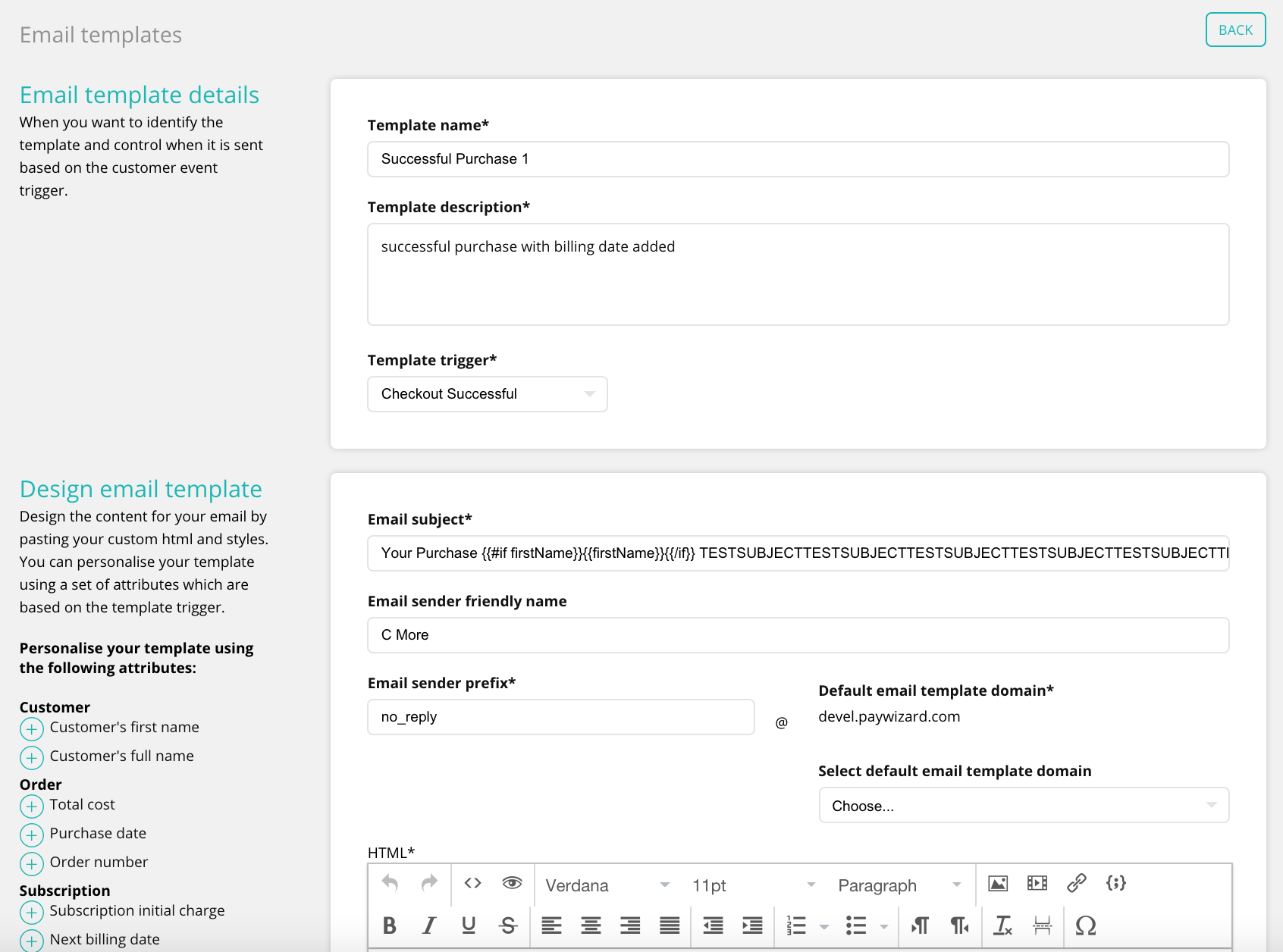
...
One Active Email Template for each triggerWhen you create an email template you can only have one Active email Template for each trigger at any one time.
If there is one active at present you will need to save the one you are creating as inactive then turn the other one off first. Or disable the active one first before you begin creating a new email template.
How to create an Email Template
- Select 'New Template' in the Templates section:

...
This will launch the Email Template creation screen:
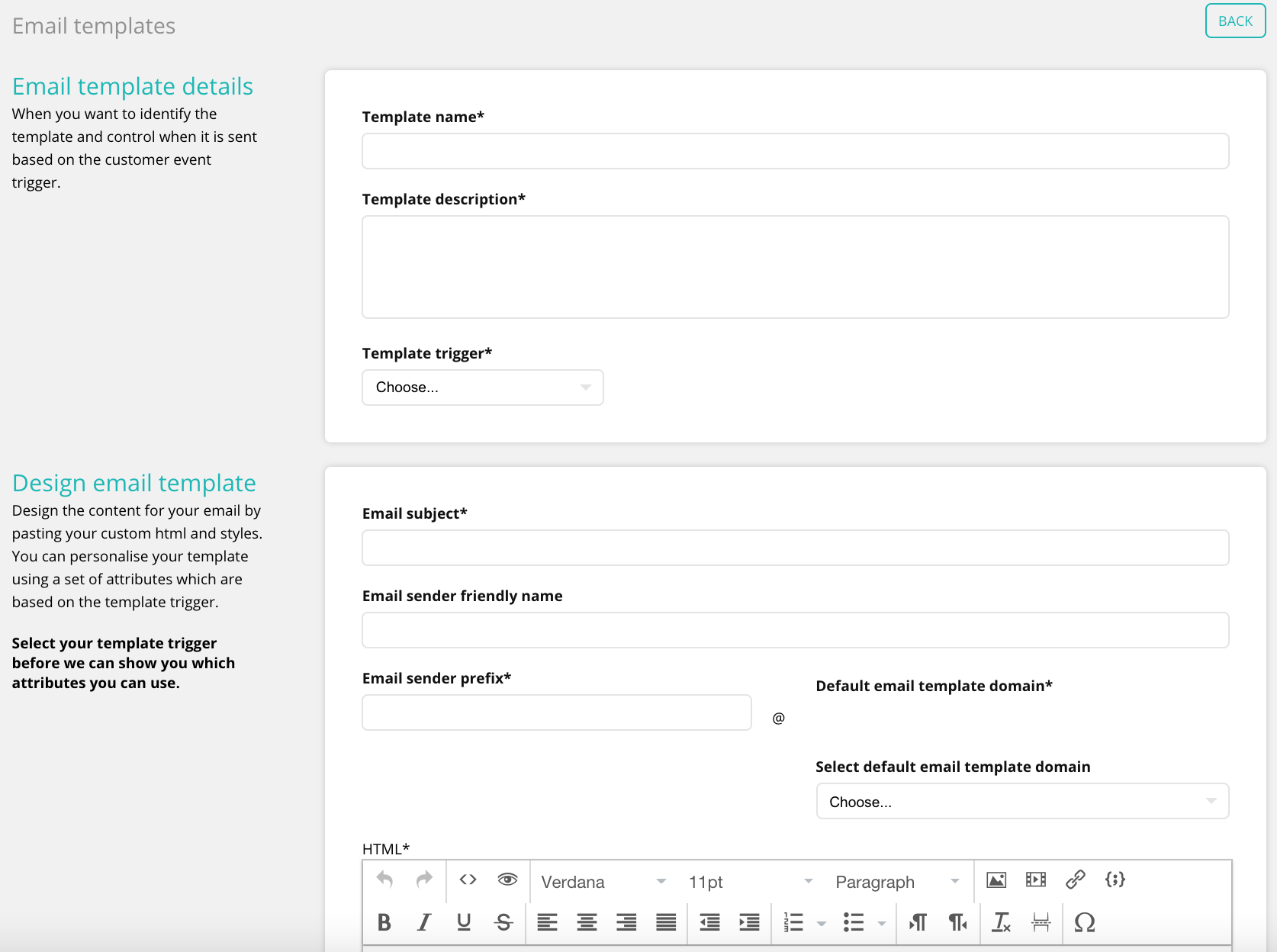
...
Complete the Email Template details
This section allows you to identify the template and control when it is sent based on the customer event trigger you link it to.
Note: Any fields marked with an * are required
- Create the Template name
- Complete the Template description
- Choose the trigger for this template from the drop down list.

...
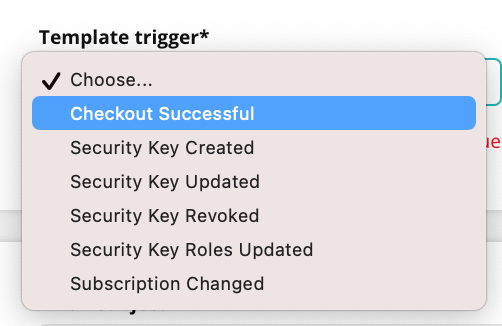
Note: You can only use one of 2 triggers; Checkout Successful or Subscription Changed.
Complete the Design Email template section
This section is for you to design the content for your email by adding your custom html and styles.
You can personalise your template using a set of attributes populated on the left which are based on the template trigger.
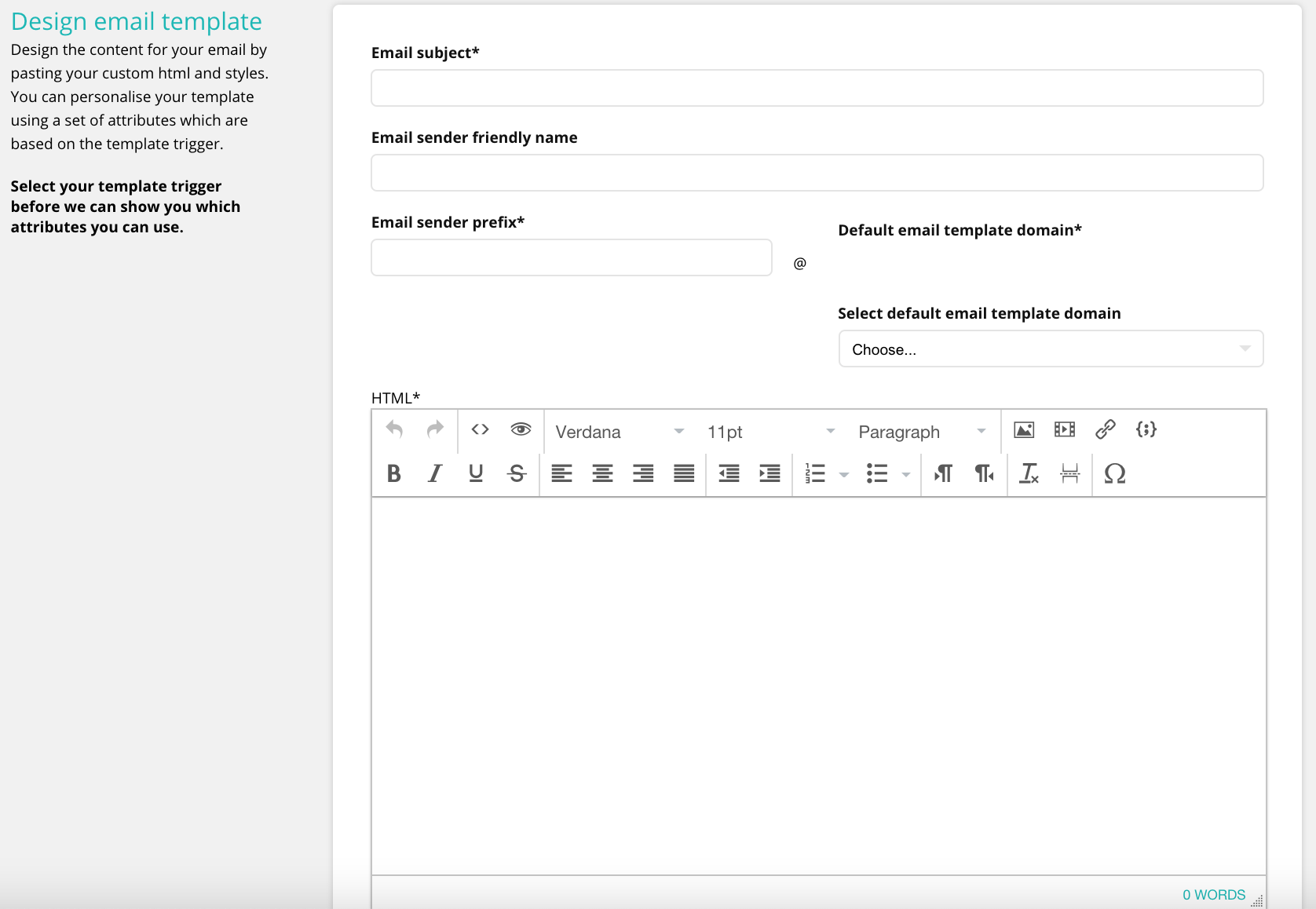
You should use the HTML Editor to edit your email style. This includes options to add images, links and videos

HTML Editor
Adding undocumented attributes to your Email TemplateYou can add attributes that do not appear on the left-hand side or with the default trigger attributes.
To do this, you have to extract the attribute from the Event Stream and then once formatted include it in the plain text section of your Email Template.
The Event stream for “eventType”:“SERVICE_CHECKOUT_SUCCESS” has additional attributes such as Username or Masked PAN, which are not included in the email template for Successful Purchase. You can however add this manually to your template.
- Simply find the event from the Event Stream
- Format this using a JSON formatter (use hierarchy notation to expose the data not shown in template)
- Locate and copy the Username or Masked PAN attribute text, using JSON hierarchy
- Add the Username or Masked PAN attribute text to your template within the plain text section
Once you have saved the changes this, the Username or Masked PAN will appear on all Successful Purchase emails.
Note: Any fields marked with an * are required
- Complete the Email subject - this is the subject of the email that will be sent to your customer
- Complete the Email sender friendly name - this is optional and if used you can add a name to the sender as opposed to just a default 'no reply'.
An example of this could be:
Instead of seeing an email come from [email protected] you could add the email sender friendly name as Singula Customer Support, so the customer would see the email has come from Singula Customer Support. (Only in the detail of the sender, would they see the email address it was sent from)
- Choose the Email sender prefix and the email template domain from the drop down.
The 'email template domain' can be set to a specific country manually within this drop down. By default, Email Templates will identify the customer's country through their registered address and default to that country if it has been setup (see Email Domain Management Guide). If their country is not available in the list, then the default 'email template domain' will be used.
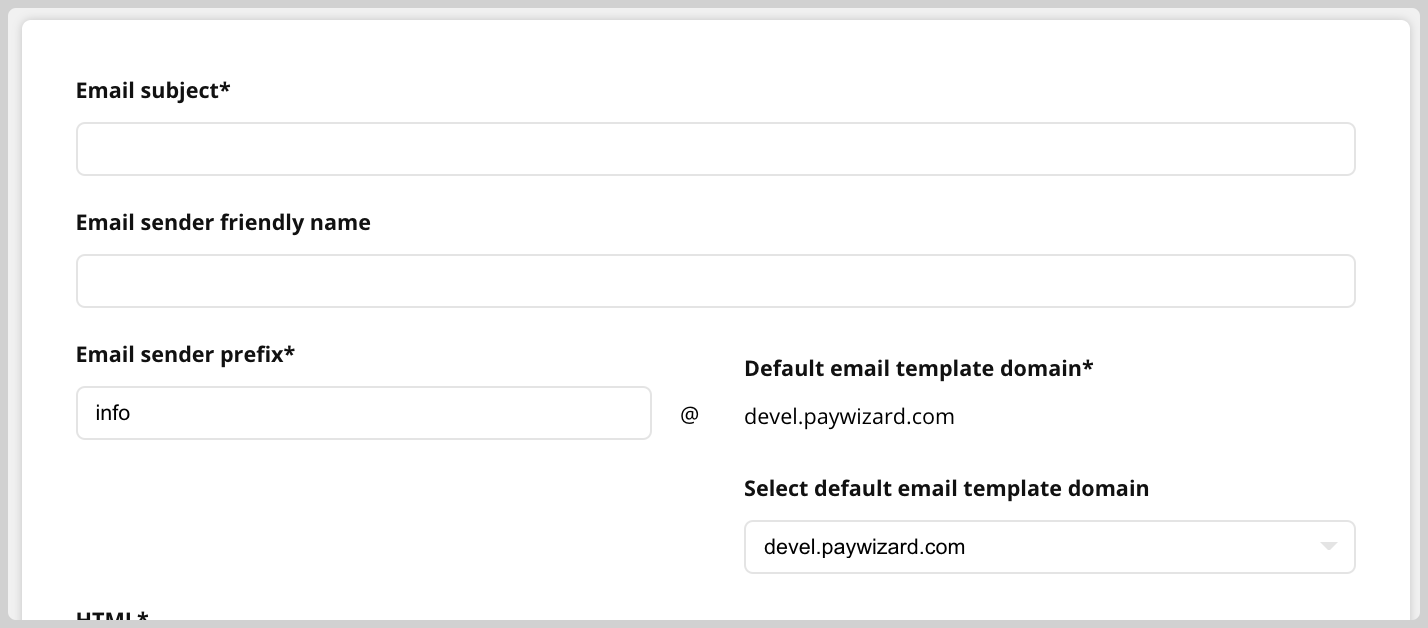
...
- Add your HTML code for your formatting of the email template.
- Add your Text for your Email template ( this can be copied from HTML)
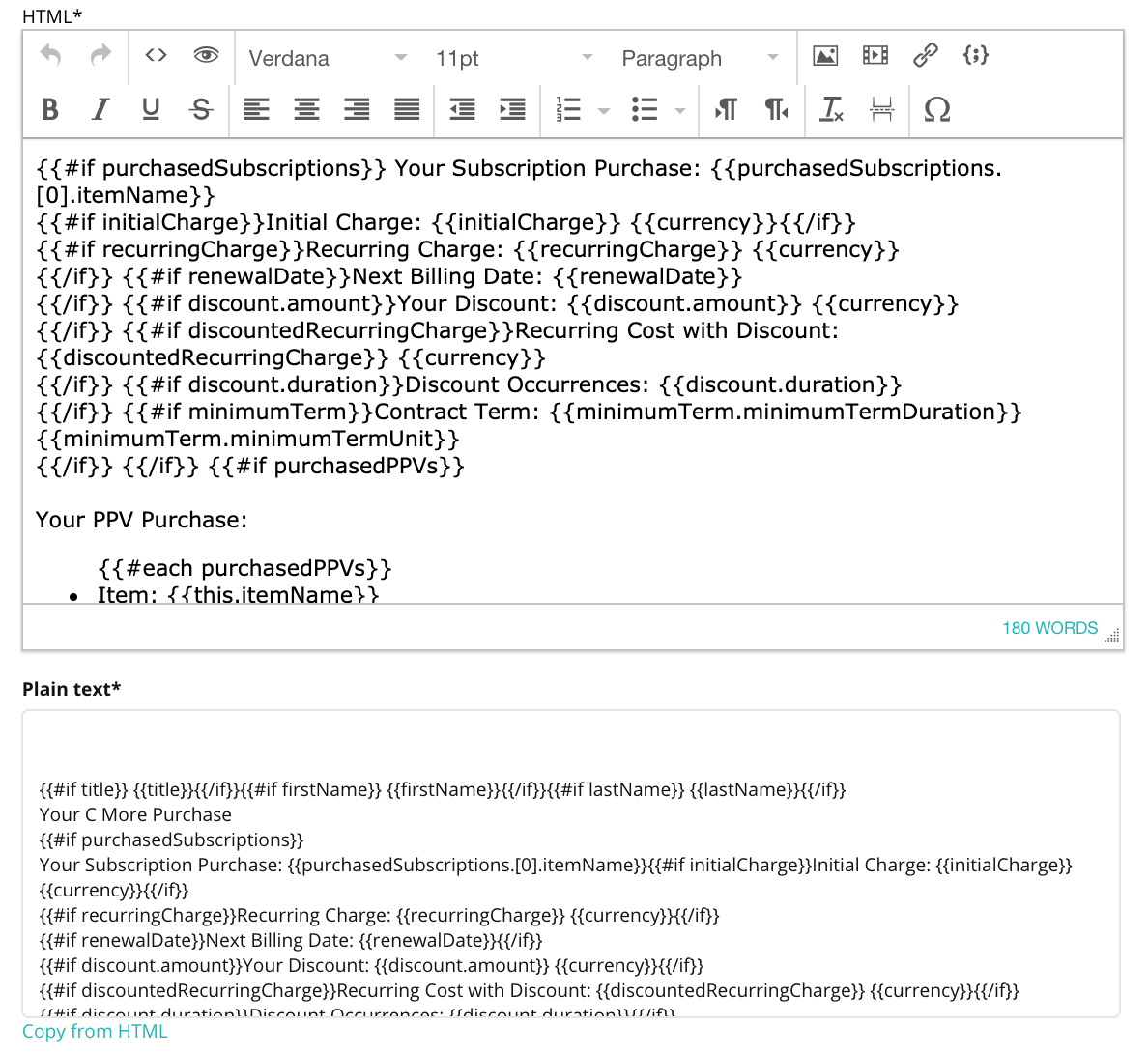
...
Complete the Test Email template section
We recommend testing your email before sending to any of your customers. This will give you a real view of what a customer will see when they receive the email and will help you identify and resolve any template issues before you enable the template.
Note: It will use default data setup for each email template type but take the layout of the current email template you are editing.
- Choose the 'Test email type' from the drop down
- Enter your recipient's email address and then select 'Send Test Email'

...
Confirm the Email Template availibility
Finally you need to confirm the template availability.
This is set to enabled by default however, if you want to disable it to use at a later date, select 'Template disabled" button
Once you're happy with the template, select 'Save' to create the email template.

...
Remember you can view and edit any templates you create within the Email Templates section.
Updated 6 months ago
